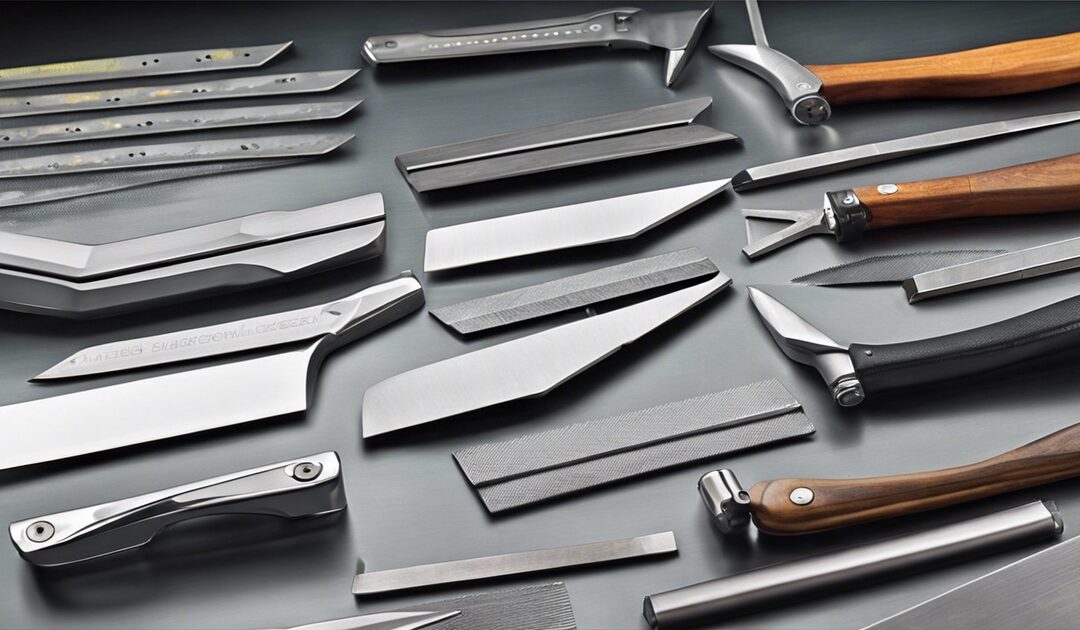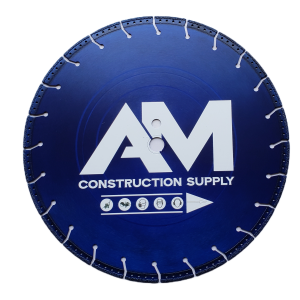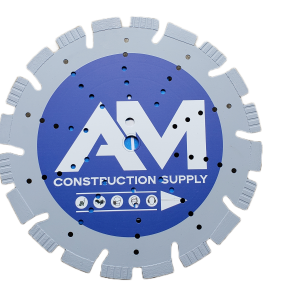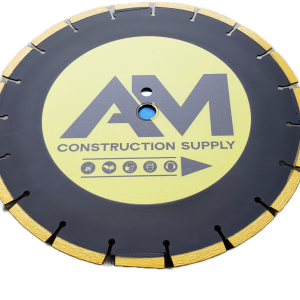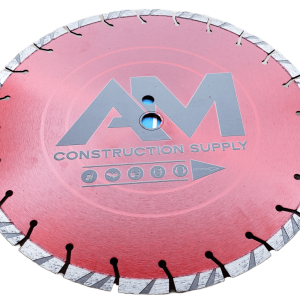Choosing the right blade for cutting can feel like navigating a maze. On one hand, you have blades that promise precision but fall short on durability. On the other, there are those that last an eternity but couldn’t cut a straight line if their life depended on it. This dilemma leaves many wondering: what are the best blades for cutting, considering the job, heat, life, and surface finish? Whether you’re a DIY enthusiast tackling your latest project or a professional seeking to enhance efficiency and accuracy in your work, understanding the balance between sharpness and longevity is key. We’ll dive into the world of cutting blades, shedding light on options that don’t just make the cut but redefine it.
Key Takeaways
- Identifying the right blade for your cutting project is essential for efficiency and safety; consider the material you’re cutting and the type of saw you’re using.
- For table saws, understanding the basics, such as blade diameter and arbor size, is crucial to selecting a compatible and effective blade.
- When choosing a blade, prioritize blades designed specifically for the material you intend to cut, whether it’s wood, metal, or concrete, to ensure clean cuts and longer blade life.
- Diamond blades stand out for their durability and versatility, making them an excellent choice for cutting a wide range of materials, including tough concrete and tiles.
- Investing in high-quality blades can significantly enhance your cutting experience by offering better precision, less wear on your tools, and ultimately saving you time and money.
- Always consider the long-term benefits of choosing quality diamond blades for any project, as they provide superior performance and longevity compared to standard blades.
Understanding Saw Blades
Types of Blades
There are four primary types of saw blades: ripping, crosscut, combination, and composite. Each serves a unique purpose in the workshop. For instance, ripping blades excel at cutting along the wood grain. They typically have fewer teeth designed to remove material quickly, suitable for various blade types. On the other hand, crosscut blades cut across the grain with more teeth for a smoother finish.
Choosing the right blade is crucial for both safety and quality of work. A mismatch can lead to poor cuts or even damage to the material. The difference in tooth count and design between these blades directly influences their efficiency and final outcome on various materials.
Saw Uses
Different saws require specific blades to achieve optimal performance. For example, table saws often use combination blades that offer versatility for both ripping and crosscutting. Circular saws, however, might need specialized blades depending on the project’s requirements.
The type of saw you’re using significantly affects your blade choice. Table saws are versatile tools for a variety of projects, from cabinetry to general construction. Circular saws are ideal for making quick cuts on site, while miter saws are best for precise angle cuts used in trim work or framing.
Blade Materials
Blade manufacturing involves several materials, each affecting durability and cutting ability. Carbide-tipped blades are popular due to their long-lasting sharpness and ability to handle different materials. Steel blades are less expensive but may dull quicker when used on harder materials.
Diamond-tipped blades represent the pinnacle of durability and performance, especially for cutting through tough materials like concrete or tile. Comparing these materials reveals significant differences in performance across applications. For instance, carbide might be preferred for woodworking due to its balance between cost and longevity, while diamond-tipped is unbeatable for masonry work.
Table Saw Essentials
Blade Guide
Selecting the right blade for your table saw is crucial for optimal performance and safety. For ripping lumber along the grain, blades with fewer teeth, typically 24 to 30, are ideal as they remove more material quickly. Cross-cutting, on the other hand, requires a higher tooth count, around 60 to 80, to ensure a smoother finish across the grain.
Joinery work demands precision. Blades designed specifically for dado cuts or creating box joints are essential. When working with plywood or laminates, opt for blades with high tooth counts and a triple-chip grind to prevent chipping.
Maintaining your blade’s efficiency involves regular cleaning and sharpening. Always follow manufacturer guidelines for care and ensure safety by using push sticks and keeping guards in place during operation.
Kerf Differences
Full Kerf
Full kerf blades are defined by their thicker width, usually about 1/8-inch. They’re built for heavy-duty cutting tasks and provide stability during long rips or deep cuts in hardwoods. The benefits include reduced vibration and a smoother cut but at the cost of requiring more power from the saw motor, which can strain less powerful machines.
Thin Kerf
Thin kerf blades have a narrower width, less than 1/8-inch, making them ideal for lighter table saws or when conserving material is important. They produce less waste and require less motor power, making them easier to handle. However, precision can be compromised if not used correctly due to their flexibility. In scenarios where fine detail is not critical but efficiency is valued, thin kerf blades shine.
Blade Sets
Investing in blade sets can be both economical and practical for woodworkers who tackle a variety of projects. These sets typically include several types of blades, covering everything from ripping and cross-cutting to specialized joinery tasks.
The primary benefit of purchasing a set is the cost savings compared to buying individual blades. Having a range of blades at your disposal increases versatility and ensures you always have the right tool for the job at hand.
Selecting the Best Blade
Project Requirements
Choosing the right blade for your project is crucial. The blade you select must align with specific project requirements. This means considering both the scale of your project and the type of material you’re working with.
For large-scale projects, blades designed for heavy-duty use are essential. They can handle prolonged cutting without losing efficiency. On the other hand, smaller projects might benefit from finer blades that offer precision.
When cutting different materials, the choice becomes more nuanced. For example, woodworking projects often require blades with more teeth to ensure a smooth finish. Cutting metal, however, demands a blade with fewer, but harder teeth to cut through tough surfaces without damage. Concrete cutting requires special diamond-tipped blades capable of handling its hardness.
Material Considerations
The material you’re planning to cut plays a pivotal role in selecting the appropriate blade. Different materials not only have varying levels of hardness but also density. These factors significantly influence which blade will perform best.
Wood, being less dense than metal or concrete, typically requires blades with more teeth for a cleaner cut. Metal demands a tougher blade, often carbide-tipped, to slice through without wearing down quickly. Concrete, the most challenging due to its density and abrasiveness, needs diamond-tipped blades that can endure and perform under such demanding conditions.
To identify the right blade for your material:
- Look at the blade’s specifications; manufacturers usually list what materials their blades are suited for.
- Consider material hardness and density; harder materials need tougher blades.
- Don’t overlook blade tooth count; higher counts are better for smoother cuts in softer materials.
Table Saw Blade Types
Rip Blades
Rip blades are crafted with a specific design to cut along the grain of wood. They have fewer teeth, usually between 10 and 40. This design allows for faster cutting since there’s less material for the blade to remove. It’s ideal for making quick, efficient cuts in natural wood.
The benefits of using rip blades lie in their ability to make quick work of cutting tasks. The lower tooth count is crucial here. It helps achieve fast cuts without compromising too much on the quality of the cut. For those looking to cut large volumes of wood quickly, rip blades are indispensable.
Crosscut Blades
Crosscut blades serve a different purpose than rip blades; they’re designed for making clean cuts across the grain of wood. These blades typically have a higher tooth count, often ranging from 60 to 100 teeth. This makes them perfect for achieving finer, more precise cuts.
These blades are especially suited for detailed woodworking projects where precision is key. The higher tooth count ensures that each cut is smooth and minimizes splintering or tear-out. For craftsmen who prioritize the finish of their work, crosscut blades are essential tools.
Combination Blades
Combination blades offer the best of both worlds; they can perform both ripping and crosscutting tasks reasonably well. They usually feature a balanced tooth count, around 40 to 50 teeth, which provides a middle ground between speed and precision.
These blades are incredibly convenient for those who frequently switch between cutting types but don’t want to change blades constantly. Their versatility makes them cost-effective as well, eliminating the need for multiple specialized blades. For general-purpose use in woodworking, combination blades stand out as practical choices.
Advantages of Diamond Blades
Durability
Diamond blades stand out for their exceptional durability. This durability stems from the high-quality materials and advanced construction techniques used in their making. Unlike standard blades, diamond blades incorporate a mixture of diamond crystals and metal powder, which is then sintered at high temperatures to form a solid edge. This process ensures that the blade can withstand intense cutting tasks without quick wear.
Choosing durable blades like these not only ensures long-term use but also leads to significant cost savings. Instead of frequently replacing worn-out blades, investing in a diamond blade can provide years of reliable service. To maintain this durability, users should adhere to proper care practices. Cleaning the blade after use, avoiding overheating during cuts, and storing it in a dry place are all essential steps to prolong its life.
Precision Cutting
The type of blade and tooth count play crucial roles in achieving precision cuts. Diamond blades excel in this area due to their design, which allows for cuts with exceptional accuracy and finish across various materials. Whether cutting through tough concrete or delicate tile, these blades make clean and precise cuts with minimal effort.
For tasks requiring high precision, selecting the right diamond blade becomes paramount. Factors such as the material being cut and the desired finish should guide this choice. For instance, a blade designed for concrete may not yield the same results on porcelain tiles. Thus, understanding the specific application will aid in choosing the most suitable diamond blade for the job.
Choosing High-Quality Blades
Brand Reputation
Selecting blades from reputable manufacturers is crucial. A strong brand reputation often signals high-quality products. These brands invest heavily in research and development to ensure their blades meet specific cutting needs. For example, when considering the advantages of diamond blades, brands known for durability and performance should be at the top of your list.
Researching brands known for high-performance blades can save you time and money in the long run. Look for companies with a history of innovation in blade technology. They likely offer products that can handle demanding tasks efficiently. Websites, industry forums, and trade magazines are good sources for this information.
User Reviews
User reviews are invaluable when choosing blades. They provide real-world insights into how a blade performs over time. Reviews can highlight both strengths and weaknesses, giving you a clearer picture of what to expect.
To make the most out of user reviews, focus on those that detail specific uses similar to your needs. Pay attention to comments about blade longevity and how well they maintain sharpness. This information is particularly useful if you’re looking for blades that last longer after reading about the advantages of diamond blades.
Here are some tips for finding useful reviews:
- Visit online marketplaces and specialty stores.
- Check forums dedicated to construction, woodworking, or whichever field applies to your use case.
- Look for patterns in reviews; consistent praise or complaints can be very telling.
Diamond Blades for Every Project
Concrete Cutting
For tackling concrete and other masonry materials, specialized blades are a must. These blades often feature diamond-tipped edges, designed to cut through tough surfaces with precision. They stand out for their durability and effectiveness in slicing through concrete without wear and tear.
Safety is paramount when cutting concrete. Users should follow best practices, such as wearing protective gear and ensuring the blade is suitable for the material’s hardness. This not only ensures a clean cut but also prevents accidents.
Metalworking
In the realm of metalworking, choosing the right blade can make all the difference. Bi-metal and carbide-tipped blades are among the top choices due to their robustness and longevity. These blades are engineered to tackle the inherent challenges of cutting metal, including its density and potential for causing wear on lesser materials.
The key to successful metal cutting lies in blade speed and lubrication. Proper lubrication reduces friction, allowing the blade to slice through metal smoothly while preventing overheating. Adjusting blade speed according to the metal’s thickness ensures efficient cuts without compromising the blade’s integrity.
Woodworking
Woodworking demands a diverse array of blades, each tailored to specific tasks and wood types. From fine cuts needed in cabinetry to more robust applications like furniture making, selecting the right blade impacts both the quality of work and project efficiency.
For high-quality woodworking results, it’s crucial to choose blades that match the job at hand. Tips include considering the wood’s hardness and desired finish. For intricate work, thin kerf blades offer precision, while broader blades support faster cuts in less dense woods.
Why Choose Quality Diamond Blades
Superior Performance
Quality diamond blades stand out due to their superior cutting performance. The design of the blade, particularly the tooth geometry and the materials used, plays a critical role. For instance, the unique arrangement of diamond segments around the edge can significantly enhance cutting speed and precision.
Matching these high-performance capabilities with project demands is crucial. A blade designed for cutting through hard materials like concrete or stone will differ from one suited for softer materials. This ensures efficiency and accuracy in various tasks.
Examples of cutting tasks that benefit greatly from quality blades include slicing through reinforced concrete, accurately shaping granite countertops, and efficiently segmenting asphalt. Each task requires a blade optimized for the material’s hardness and abrasiveness, showcasing how tailored designs improve outcomes.
Longevity and Value
Investing in high-quality diamond blades offers long-term value. These blades are not only durable but also designed for extended use when properly maintained. The key to maximizing a blade’s life lies in selecting the right blade for the job, adhering to recommended usage practices, and regular maintenance.
Proper blade selection reduces wear and tear, while correct usage prevents premature dulling or damage. Regular maintenance, such as cleaning and inspecting for wear, ensures optimal performance over time.
To get the best value from your investment:
- Choose blades that match your most common projects.
- Follow manufacturer guidelines for operation and care.
- Store blades properly when not in use.
These steps help extend the life of your diamond blades, making them a cost-effective choice for both professional contractors and DIY enthusiasts alike.
Summary
Navigating the world of saw blades can seem daunting, but understanding the essentials and selecting the best blade for your project is key. From the intricacies of table saw blades to the unparalleled benefits of diamond blades, we’ve covered what you need to know to make informed decisions. Quality diamond blades stand out for their durability and precision, making them a top choice for any cutting task. Remember, investing in high-quality blades not only enhances your work but also ensures safety and efficiency.
Now’s the time to upgrade your toolkit with the best blades on the market. Don’t settle for less; choose quality diamond blades that match your project’s demands. They’re not just tools; they’re your partners in crafting excellence. Start exploring today and see the difference quality makes. Your projects deserve nothing but the best.
Frequently Asked Questions
What are the best blades for cutting?
Diamond blades are considered the best due to their durability and versatility in cutting various materials, offering precision and efficiency.
How do I select the best blade for my project?
Consider the material you’ll be cutting and choose a blade designed specifically for that purpose. Diamond blades are often a superior choice for a wide range of projects.
Why should I choose quality diamond blades?
Quality diamond blades provide longer life, better cuts, and more safety. They reduce the need for frequent replacements, saving time and money in the long run.
What are the advantages of using diamond blades?
Diamond blades offer unmatched cutting performance on a variety of materials, including concrete, asphalt, and tile. Their durability and speed make them highly efficient.
Can one blade fit all cutting needs?
No, different materials require specific types of blades for optimal cutting. Selecting a blade tailored to your project’s material ensures better results and longevity of the blade.
How can I ensure I’m choosing high-quality blades?
Look for reputable manufacturers and read reviews from other users. High-quality blades often come with detailed product descriptions and certifications that attest to their performance.

